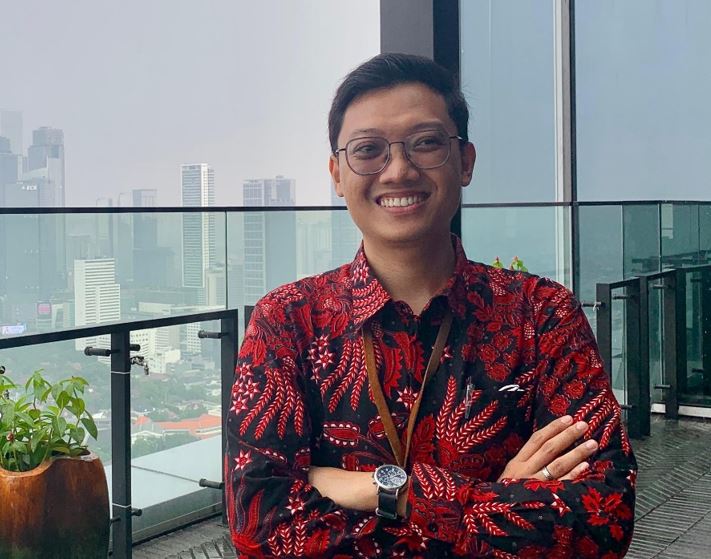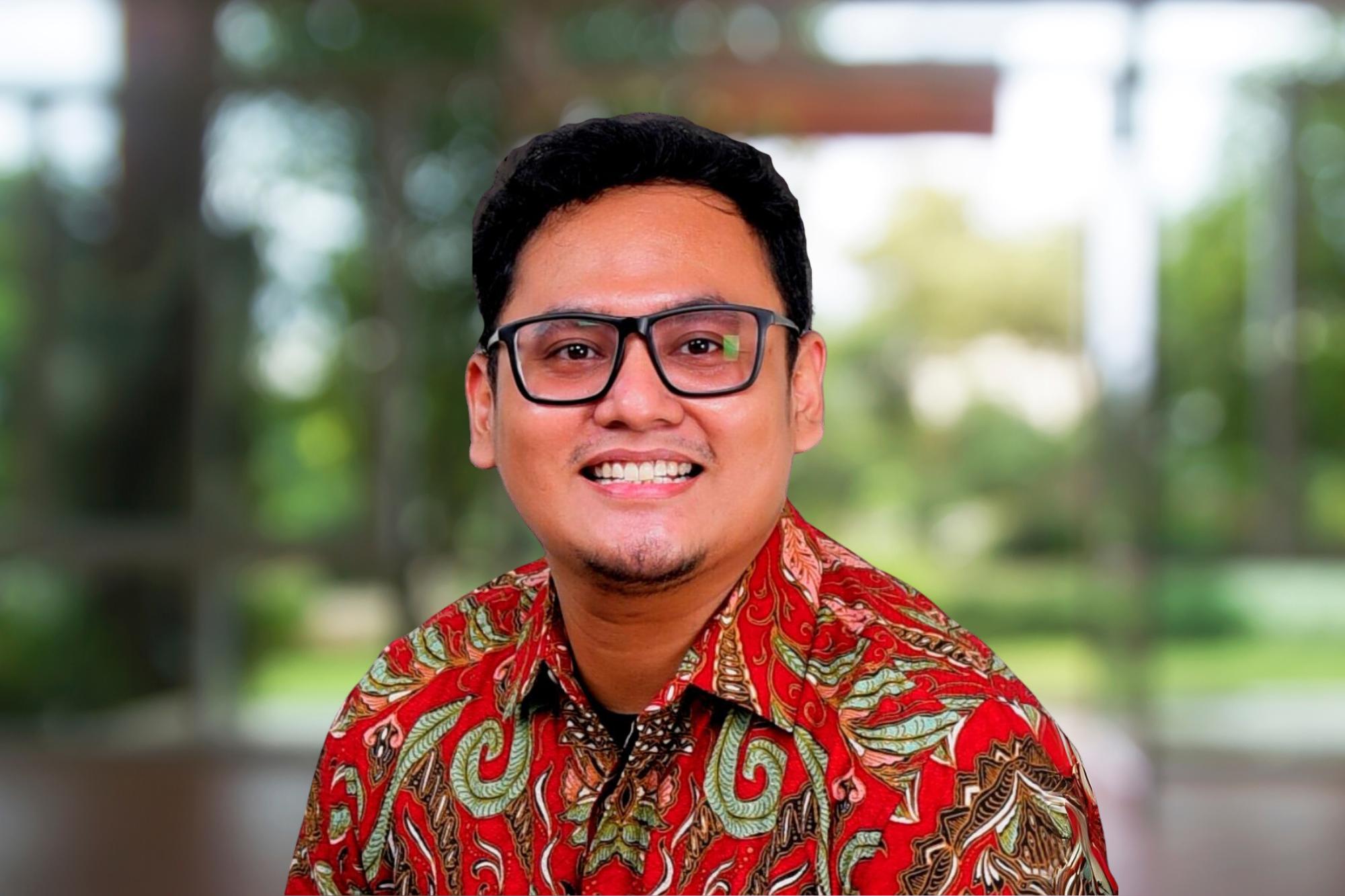Indonesias Maritime Fulcrum and Tourism Challenges
 Hardyanto, Kepala Bidang Naskah pada Asisten Deputi Bidang Naskah dan Terjemahan*)
Hardyanto, Kepala Bidang Naskah pada Asisten Deputi Bidang Naskah dan Terjemahan*)
Indonesia: An Ultimate Maritime Country
Indonesia was born archipelagic. Indonesia was naturally created maritime. The peoples life thus should be maritime-envisioned. The tourism vision should therefore be maritime-oriented.
All of us are fully aware that two-third of our entire earth consists of oceans. According to available data from various sources, our common sole planet has surface area of more than 510 million sq km.
It consists of total land area with more than 148 million sq km or 29% and total water area with more than 361 million sq km or 71%, including the whole ocean areas with more than 335 million sq km. Hence, the ocean covers 65% of our worlds total surface area. Meanwhile, the Pacific Ocean, where Indonesia lies, has an area of more than 166 million sq km or 32.5% of total world area; or, in other view, a third of world-wide oceans. And, Indonesia, the biggest archipelagic country in the world, lies right in the epicenter of the ocean world.
Indonesia has more than 17 thousands islands where around 10 thousands are islets. Indonesia has sea line along 81 thousand km, and the sea width of around 3.1 million sq km. Indonesia has therefore massive potentials to develop further its maritime richness, including maritime tourism.
Indonesia as a matter of fact is the largest archipelagic country in the world. Indonesia has total area of 1,919,440 sq km, consisting of water area around 1,826,440 sq km and land area around 93,000 sq km. Indonesia has therefore two third area of water. Meanwhile, Indonesian coastline has the length of 54,716 km.
Even, although Indonesia is only the sixteenth largest country on earth, however Indonesia is the largest country in term of territorial sea in the world. The United Nations Environment Programme (UNEP) Geo Data Portal provides data on Indonesia with 3,205,695 sq km territorial sea (the largest in the world, followed by Canada, Russian Federation, and the U.S.) and 95,181 km coastline length (the fourth longest after Canada, the U.S., and Russian Federation). This very nature condition states itself that Indonesia is quintessentially a gigantic oceanic country.
Indonesia, to come to the point, is geographically a maritime country. From Sabang in the westernmost to Merauke in the easternmost and from Miangas Island in the northernmost to Rote Island in the southernmost spans the geographical and territorial entity of Indonesia as a maritime country.
Considering the blessed geographical nature and the current international condition, Indonesia (or often called Nusantara; Nusa means islands, antara means in-between) shall take into account and start mainstreaming a maritime approach in its development approach. Indonesia shall begin outlining a grand design for an archipelagic policy or maritime policy.
Indonesia should formulate a well-planned and integrated grand design for archipelagic or maritime policy which will bring Indonesia into the new hope for the sake of better life and sustainable development in the subsequent decades or even the glory in the centuries ahead.
The Jokowi Doctrine
In declaring as the president and vice-president candidacy, the couple Joko Widodo and Jusuf Kalla announced a political manifesto so-called the Nawa Cita or Nine Aspirations if they would win the presidential election. The couple set the nine-priority agenda in front of Gedung Joang 45 on 19 May 2014. The aspirations are arranged to point out the priorities of ways of change towards Indonesia that is politically sovereign, economically independent, and culturally principled. These three are usually called as the Indonesian first president Soekarnos Trisakti.
The very first Nawa writes that the so-called Jokowi-JK couple wants to be present the state again to protect the whole nation and give the feeling of secure to the whole citizen, through free and active foreign policy, resilient national security, and development of integrated three-forces state defense based on national interest, and strengthen the self-identity as a maritime country.
Afterward, as the Election Commission published that the Jokowi-JK couple win the election, the duo then declared the victory statement. The speech was delivered on board a Phinisi ship on 22 July 2014 in Sunda Kelapa Port. President-elect Jokowi emphasized that there is a never-die mutual self-help among us. That mutual self-help will make Indonesia not only able to stand strong in facing challenges but also develop to become the world maritime fulcrum, the locus of future political great civilization.
Subsequently, as a newly inaugurated President of the Republic of Indonesia, Joko Widodo in his first ever official speech before the Peoples General Assembly on 20 October 2014 stressed that I also want to present amongst the nations with honor, with dignity, with self-pride. We want to become the nation who is able to set our own civilization; the creative great nation which is able to contribute the nobleness for global civilization. We must work in a very hard manner to re-turn Indonesia as a maritime country. The President further added The ocean, the sea, the strait, and the bay are the future of our civilization. We have been too long turning our backs against the sea, the ocean and the strait and bay. This is the time for us to return them all, therefore the Jalesveva Jaya Mahe, In the sea we are glory, as our ancestors slogan, is able to re-sound profoundly.
At a later year, in the occasion of the commemoration of the independence of the Republic of Indonesia before the Peoples General Assembly and Council of Peoples Representatives on 16 August 2015 President Jokowi reasserted that I want to prove that we are not permitted again to back our ocean and sea. Our sea, that concerns widely, has economic, security, and unity potencies. The environment that is now threatened by climate change is needed to save by us. We also have to protect our sea and security threat such as illegal fishing and sea-resources pillage. The caught ships have to face the firmness, including to be sunk. The international law opposes the illegal fishing and sea-resource pillage. President Jokowi added that one of my most important agenda is to realize the sea toll. The sea toll that becomes the part of maritime infrastructures which facilitated by productive ship docks. Insya Allah this policy will increase the maritime sustainable economy with sea preservation and better sea spatial. The president further affirmed that in line with that, we have to dig again maritime culture and Indonesias maritime identity. The nation that keeping and using the sea with full of concern. Then he closed That the beginning of our effort to become the World Maritime Fulcrum that is not only conceptualized to create for national resilience but also for regional and global resilience. This strategy that is now deliberated and it will be released as Indonesias National Maritime Policy.
Finally, President Joko Widodo launched his maritime fulcrum doctrine to the world. On the occasion of the East Asia Summit (EAS) in Myanmar on November 2014 he delivered his speech which mentioning five pillars of maritime fulcrum, namely:
- Rebuild Indonesia’s maritime culture. As a country consisting of 17,000 islands, Indonesia should be aware of and see the oceans as part of the nation’s identity, its prosperity and its future are determined by how we manage the oceans.
- Maintain and manage marine resources, with a focus on building marine food sovereignty through the development of the fishing industry.
- Provide priority to the development of maritime infrastructure and connectivity by constructing sea highways along the shore of Java; establish deep seaports and logistical networks as well as developing the shipping industry and maritime tourism.
- Through maritime diplomacy, Indonesia invites other nations to cooperate in the marine field and eliminate the source of conflicts at sea, such as illegal fishing, violations of sovereignty, territorial disputes, piracy and marine pollution.
- Indonesia has an obligation to develop its maritime defense forces. This is necessary not only to maintain maritime sovereignty and wealth, but also as a form of our responsibility to maintain the safety of shipping and maritime security.
The Maritime-oriented Tourism Challenges
Concurrently, in the peak event of the Commemoration of Nusantara Day at Banda Aceh on 13 December 2015 the Vice-President Jusuf Kalla spoke that the importance of Maritime Fulcrum for Indonesia which will provide strong power to this nation. Vice-President added that the great power will need to be supported by willpower and advanced knowledge. He further stressed that Maritime is not only to connect one island to another, but is also to have a huge resource as drawn by willpower and advanced technology to explore such resources. The resources include among others a huge amount of mineral resources and natural gas. The government should therefore effort to preserve them by maintaining the sea sovereignty, among others by alleviating illegal fishing. He further emphasized that without sovereignty in the sea, such resources cannot be optimally obtain for our welfare. He assured that the commemoration of Nusantara Day is a beginning day for improving maritime affairs. The annual celebration day will figure out the unity of Indonesia in determining to advance the nation from the land and the sea.
In connection with that, the above commemoration directly linked to the tourism promotion as a compact package. As Presidential Decree Number 10 Year 2015 on Coordinating Ministry for Maritime Affairs signed 21 January 2015 stipulates that the coordinating ministry includes ministry of tourism. As a matter of fact, there are various challenges to promote maritime development. The challenges cover from security and political affairs to social and economic issues. The challenges are among others the borderlines, piracy, peoples smuggling, refugee from regional neighbor countries, legal aspects, business rivalries, and other marine matters. And the government should take several actions.
The government keeps endeavoring to realize its consistency in the framework of strengthening Indonesias maritime status. After doing handling over illegal fishing, the next step will be done by the government is to rearrange the national fishing industry. The government targets to return Indonesia as the Asias number one in catching-fishing industry like during the mid 1990s.
One challenge is to create new prioritized tourism destination icons other than Bali. The government announces ten tourism icons for the year 2016. The icons range from western to eastern and from northern to southern Indonesia. Three of them are inland-tourism icons (Toba, Borobudur, and Bromo Tengger). While the rest seven icons are island-tourism icons (Tanjung Kelayang, Kepulauan Seribu, Tanjung Lesung, Morotai, Wakatobi, Labuan Bajo, and Mandalika).
Another important challenge is nation branding. Indonesia needs a compact yet comprehensive nation brand in order to raise the countrys admirably reputation. The nation brand can represent the positive image of Indonesia. The government will fashion an identical logo-and-slogan for the promotion of tourism, trade, and investment sectors. Indonesia actually has already two slogans remarkable Indonesia and wonderful Indonesia. The government will create one family branding which all sectors will be in the same line in branding the nation. The influence of country brand will boost the percentage of tourism, trade, and investment. At last, nation branding is functioning as one of public diplomacy efforts in terms of soft power of the country.
Observances for the Year 2017
At the very end, we have to consider some observances in the year 2017 that shall be conducted appropriately. They range from national-scale agenda, regional-scope program, to global-wide event. For national-scale agenda the government shall observe in a more frequent manner over Sailing Indonesia. We have observed Sail Banda (2010), Sail Wakatobi-Belitong (2011), Sail Morotai (2012), Sail Komodo (2013), Sail Raja Ampat (2014), Sail Tomini (2015), and Sail Selat Karimata (2016). There is a need to observe more than one Sail program a year to invite familiarity and recognition toward maritime existence on Indonesian peoples consciousness. Moreover, it is important to note that next year will be the 60th year commemoration of Djuanda Declaration (13 December 1957) which is nationally celebrated as Nusantara Day (Hari Nusantara) as an annual agenda. As Indonesia proclaims its maritime fulcrum, we shall observe the declaration in a distinctive celebration on a timely momentum.
For regional-scope program, among others, there is an annual international youth exchange program so-called The Ship for Southeast Asian Youth Programme (SSEAYP). The programme is held by the governments of ASEAN and Japan. Next year the programme will reach its 44th programme. The programme is conducted on board the cruise ship Nippon Maru and visited around six ASEAN countries and Japan annually. The programmes have in fact created friendship, brotherhood, and family hood among the participating youths and leaders that in its turn it will create peace and harmony among countries. Such programme can become the blue print for creating, among others, Indonesia Youth Exchange Program on board Indonesian traditional and/or military and/or business cruise ship(s) by inviting the participation from each provinces youth and explore every single provinces maritime richness consecutively in a regular manner. By the same token, the ASEAN has been entering the ASEAN Community since last 2015. It is the time for ASEAN member countries to realize the ASEAN Socio-Cultural Community as one of three pillars of ASEAN Community by expanding cultural relations through tourism exchanges regarding that ASEAN member countries are very diverse in terms of socio-culture, unexceptionally tourism diversity.
For global-wide event, Indonesia is now the chair of Indian Ocean Rim Association (IORA) for 2015-2017 period. In the framework of the 20th commemoration of formation of IORA on 7 March 1997, Indonesia will host the one-off IORA Summit on 7 March 2017. The summit will then fortunately become the first international-scale maritime summit for Indonesia. Therefore, it will be the right time and the right place for echoing Indonesias maritime fulcrum globally as well as the best occasion and location for promoting Indonesias tourism attractions. Last but not least, during the United Nations seventieth sessions second committee of agenda item 20 on Sustainable development, the 81st UN General Assemblys plenary meeting on 22 December 2015 has adopted the draft resolution proposed by Indonesia and other more than 30 countries on tourism and development. The resolution is namely A/RES/70/193 International Year of Sustainable Tourism for Development, 2017. The resolution, among others, Recognizing the importance of international tourism, and particularly of the designation of an international year of sustainable tourism for development, in fostering better understanding among peoples everywhere, leading to a greater awareness of the rich heritage of various civilizations and bringing about a better appreciation of the inherent values of different cultures, thereby contributing to the strengthening of peace in the world, and Recognizing also the important role of sustainable tourism as a positive instrument towards the eradication of poverty, the protection of the environment, the improvement of quality of life and the economic empowerment of women and youth and its contribution to the three dimensions of sustainable development, especially in developing countries,. Therefore, we shall observe the global-wide event on tourism and development as Indonesia is one of countries who propose the adopted draft resolution on International Year of Sustainable Tourism for Development, 2017. This resolution is well-timed and in conforms to Indonesias maritime fulcrum doctrine in the framework for promoting the nations tourism.
* Drs. Hardyanto, M.P.A, M.A., Kepala Bidang Naskah pada Asisten Deputi Bidang Naskah dan Terjemahan, Deputi Bidang Dukungan Kerja Kabinet; Indonesia Participating Youth in the 17th SSEAYP 1990 dan Indonesia National Leader in the 31st SSEAYP 2004.








